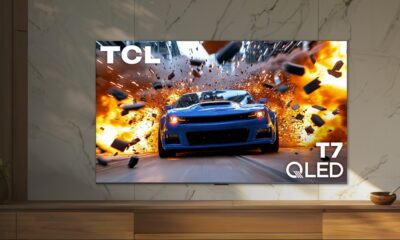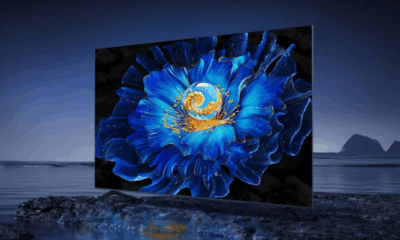News
TCL Plans to Acquire Additional 21.53% of CSOT for $1.62 billion

TCL Technology is doubling down on its dominance in the display semiconductor space. The Chinese tech conglomerate has unveiled plans to acquire a major stake in Shenzhen China Star Optoelectronics Semiconductor (CSOT), in a deal valued at 11.56 billion yuan ($1.62 billion). The transaction will significantly bolster TCL’s ownership in the panel-making subsidiary, raising its stake to 84.2% and tightening its grip on a company it has been slowly absorbing over the past decade.
The acquisition, which has already cleared a major hurdle with approval from the Shenzhen Stock Exchange, is structured as a hybrid of cash and equity. Under the deal, TCL will pay 7.2 billion yuan ($1.01 billion) in cash, while the remaining 4.36 billion yuan ($610 million) will be settled through a share issuance.
The shares are being issued to the Shenzhen Major Industrial Development Phase I Fund, the entity currently holding the 21.53% equity stake up for sale. Once completed, the deal will not only further cement TCL’s control but also realign shareholder influence within one of China’s most strategic display firms.
The transaction is still pending final clearance from the China Securities Regulatory Commission. But TCL’s track record suggests that’s just a formality. If anything, this is the continuation of a broader pattern, a slow and steady consolidation of display tech power under TCL’s umbrella.
China Star, originally a joint venture between TCL and the Shenzhen state-owned Century Science & Technology Group, has evolved from a state-backed partnership into a TCL-dominated asset through a calculated series of acquisitions and capital infusions. This latest move adds another chapter to TCL’s long-term vertical integration playbook.

It also follows hot on the heels of another massive deal. Back in September 2024, TCL shelled out 10.8 billion yuan ($1.51 billion) to acquire an 80% stake in LG Display’s Guangzhou LCD panel plant and take full ownership of its adjacent module factory. That marked a major pivot point in TCL’s display strategy, one that focused on regional consolidation and upstream control.
Now, with China Star almost fully under its wing, TCL is making clear its ambition: to become a top-to-bottom display powerhouse, from raw substrate to final module assembly. And it’s not doing it quietly. This is the second $10 billion ($1.4 billion)+ level transaction in less than a year. Few in the semiconductor display game are moving at this scale, and even fewer with this level of intent.
In related news, TCL has launched the 60 XE NXTPAPER 5G in the US, featuring an E-Ink-style display and built-in AI tools. Meanwhile, the company has also introduced the C7K QD-Mini LED TV in the Philippines, with prices starting at Php 55,499.
(Via)
News
TCL T7 QLED TVs unveiled with 4K, 144Hz refresh & Google TV, starting at $599.99
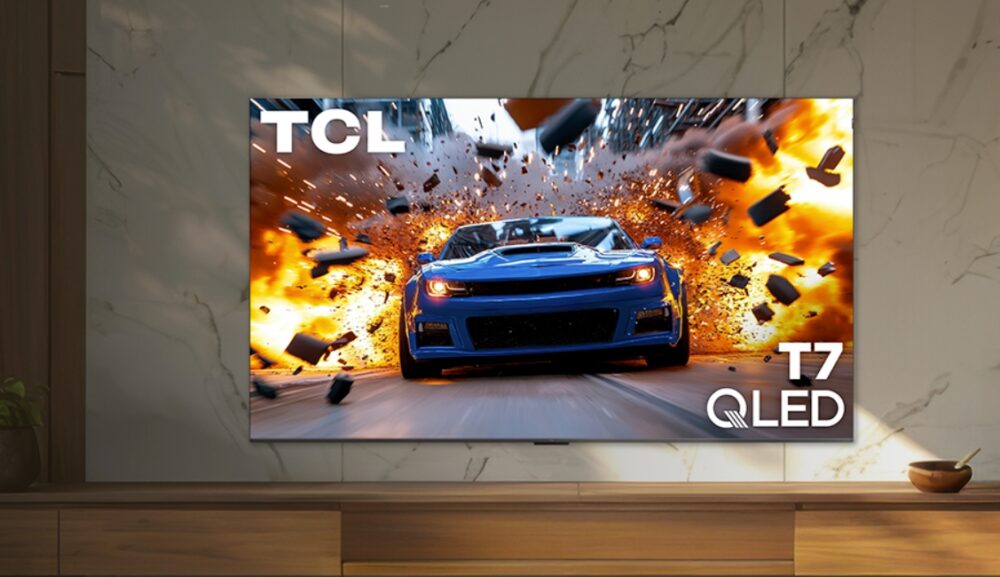
TCL is expanding its 2025 Google TV lineup with the new T7 Series, a range of 4K QLED TVs that promise high refresh rates, rich visuals, and strong gaming credentials without breaking the bank. Announced as a more affordable alternative to its high-end QD-Mini LED sets, the TCL T7 QLED TVs slot neatly into the mid-tier with plenty of premium touches.
TCL T7 4K QLED TV Specifications
The T7 Series is available in four sizes: 55, 65, 75, and 85 inches. While the 55-inch model sticks to a 120Hz native refresh rate, the larger models bump that up to 144Hz, making them suitable for fast-paced gaming and sports. TCL pairs its Quantum Dot panels with the AiPQ Pro processor, which handles real-time color and contrast adjustments for better 4K HDR visuals. Support for HDR10, HDR10+, Dolby Vision, HLG, and Open HDR is standard across the lineup.
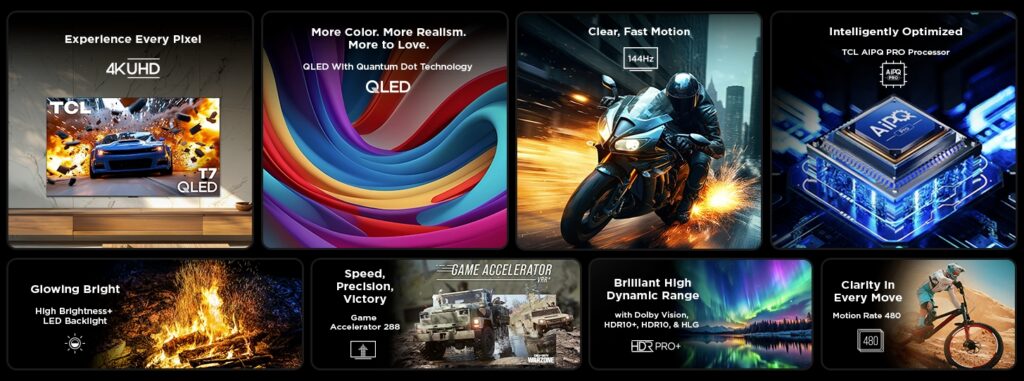
Audio gets a solid upgrade too. All models feature Dolby Atmos and Dolby Digital+ support, with the 85-inch version stepping up to a 2.1-channel Onkyo speaker setup with 40W output. For connectivity, users get four HDMI ports (including eARC), USB 3.0 and 2.0, Ethernet, and Wi-Fi 5. The TVs also support Chromecast, AirPlay 2, and voice assistants like Alexa, Google Assistant, and Apple HomeKit.
Running on Google TV, the T7 Series offers access to thousands of apps, hands-free voice control via far-field mics, and smart home integration. It also supports Apple and Android casting, plus advanced gaming features like Game Accelerator 288 and Auto Low Latency Mode.
Prices start at $599.99 for the 55-inch model and go up to $1,399.99 for the 85-inch. TCL hasn’t confirmed an exact release date yet, but the T7 Series looks positioned to challenge more expensive QLED and Mini LED rivals in 2025.
In related news, we recently explored what makes the RayNeo Air 4 AR glasses stand out.
Featured
What’s So Special About the RayNeo Air 4 AR glasses?

RayNeo has officially launched the Air 4 series in China, bringing major improvements in display, performance, audio, and comfort. The lineup includes the standard Air 4 and the premium Air 4 Pro. While its predecessor, the Air 3s Pro, continues to sell globally, the Air 4 series has just debuted in China and is expected to expand internationally in 2026. Let’s take a closer look at what makes this new generation of AR glasses stand out.
World’s First HDR10 AR Glasses
The RayNeo Air 4 is the first AR glasses product to support HDR10, setting a new benchmark for display technology in the category. The glasses include AI-powered SDR-to-HDR conversion, which upgrades non-HDR content to HDR quality on the fly. This enhancement improves contrast, deepens blacks, and boosts color depth without user intervention. The 1200-nit peak brightness ensures clarity even in well-lit environments.
Vision 4000 Display Processor
Both the Air 4 and Air 4 Pro use the Vision 4000 image-processing chip, co-developed by RayNeo and Pixelworks. The chip handles real-time tone mapping, white balance adjustment, and contrast enhancement. The Air 4 Pro supports 10-bit color output, delivering 10.7 billion colors, which results in a 64x improvement in tonal depth over standard 8-bit displays. This processing power ensures that image quality remains consistent across varied content and lighting conditions.

Micro-OLED Display and 3D Support
The glasses use 0.6-inch dual-layer Micro-OLED panels with support for 1920×1080 resolution in 2D and 3840×1080 in 3D mode. They simulate a 135-inch virtual screen viewed from 4 meters, suitable for streaming, gaming, or multitasking. With a 200,000:1 contrast ratio and 98% DCI-P3 color coverage, the display produces rich blacks, vibrant highlights, and accurate tones. The 120Hz refresh rate supports fluid motion during gameplay and high-frame-rate video.
TCL Optical Engine
RayNeo integrates TCL’s second-generation Peacock Optical Engine 2.0 across both models. The optics system benefits from TCL’s display calibration expertise and pushes color coverage up to 145% sRGB. The engine supports precise color tuning that meets the needs of video professionals and content creators. Visuals remain accurate, natural, and free from color drift, even in high-contrast scenes.

Bang & Olufsen Audio
The Air 4 series introduces a four-speaker audio system co-engineered with Bang & Olufsen. It supports spatial 3D surround sound, uses large polymer diaphragms, and employs a proprietary DAC algorithm to maintain clarity and balance. The sound-guiding fins reduce leakage by up to 80%. Whisper Mode focuses sound into the ears, ideal for quiet environments. The Air 4 Pro adds Surround Mode, expanding the soundstage for immersive content.
Comfort and Fit
RayNeo maintains a lightweight design at 76 grams across both models. The frame uses a balanced 46.7:53.3 front-to-back weight ratio to reduce strain on the nose and ears. The temples offer nine levels of adjustment, while the nose pads include three positioning levels, allowing the headset to fit a wide range of face shapes. Prescription lens support adds flexibility for nearsighted users.
Compatibility and Charging
The Air 4 series connects to smartphones, tablets, laptops, and gaming consoles, including the upcoming Nintendo Switch 2, using USB-C or HDMI adapters. The glasses support up to 100W Power Delivery passthrough charging, allowing users to continue viewing or gaming while their device charges in the background. This makes them suitable for long usage sessions without power interruptions.
In related news, global TV shipments fell below 50 million units in Q3 2025, marking a 4.9% year-over-year decline, and Redmi’s product manager stated that RGB OLED represents the future of display technology.
News
Global TV Shipments Slip Below 50 Million Units in Q3 2025, Down 4.9% YoY

Global TV shipments are showing signs of fatigue. According to the latest data from TrendForce, total shipments in the third quarter of 2025 dropped to 49.75 million units, a 4.9% year-over-year decline, and the first time Q3 figures have dipped below the 50 million mark. Despite a 6% sequential uptick from Q2, the market continues to face headwinds from weaker consumer demand and shifting global dynamics.
TrendForce attributes the slump to extended replacement cycles and the early pull-forward of demand caused by economic uncertainty. In China, where government subsidies previously helped boost local sales, the fading of those incentives has led to a measurable contraction in the domestic market. Together, these factors have slowed momentum for an industry still recovering from the post-pandemic surge in TV upgrades.
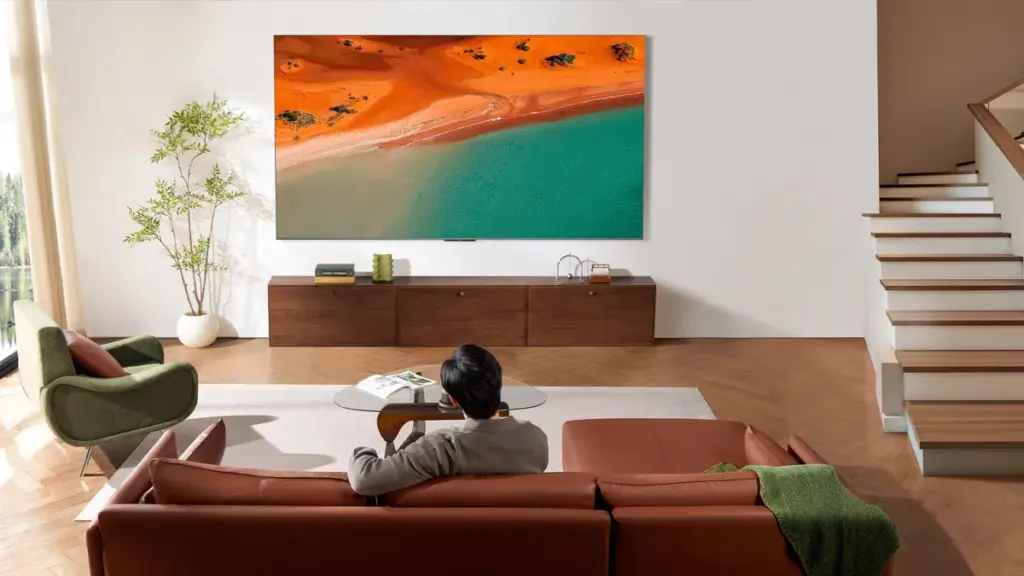
The research firm expects a rebound in Q4 as brands push through heavy promotional activity during key shopping seasons like Double 11 and Double 12 in China, as well as Black Friday in Western markets. Shipments are forecast to climb 7.3% quarter-on-quarter to 53.21 million units. Even so, full-year figures are projected to total just 195.59 million units, a 1.2% annual decline.
Samsung maintained its lead as the top global TV brand, followed by Hisense, TCL, LG Electronics, and Xiaomi, together commanding 64.3% of total shipments. Hisense saw the biggest momentum shift, moving from a conservative first half to an assertive pricing strategy in the second. Its Q3 shipments rose 9.7% quarter-on-quarter to 7.66 million units, securing the second spot globally and a 15.4% market share, its highest yet.
While the U.S. market remains relatively stable, the global TV landscape appears to be entering a mature phase, one where innovation, affordability, and brand agility will define who leads the next growth cycle.
(Via)

